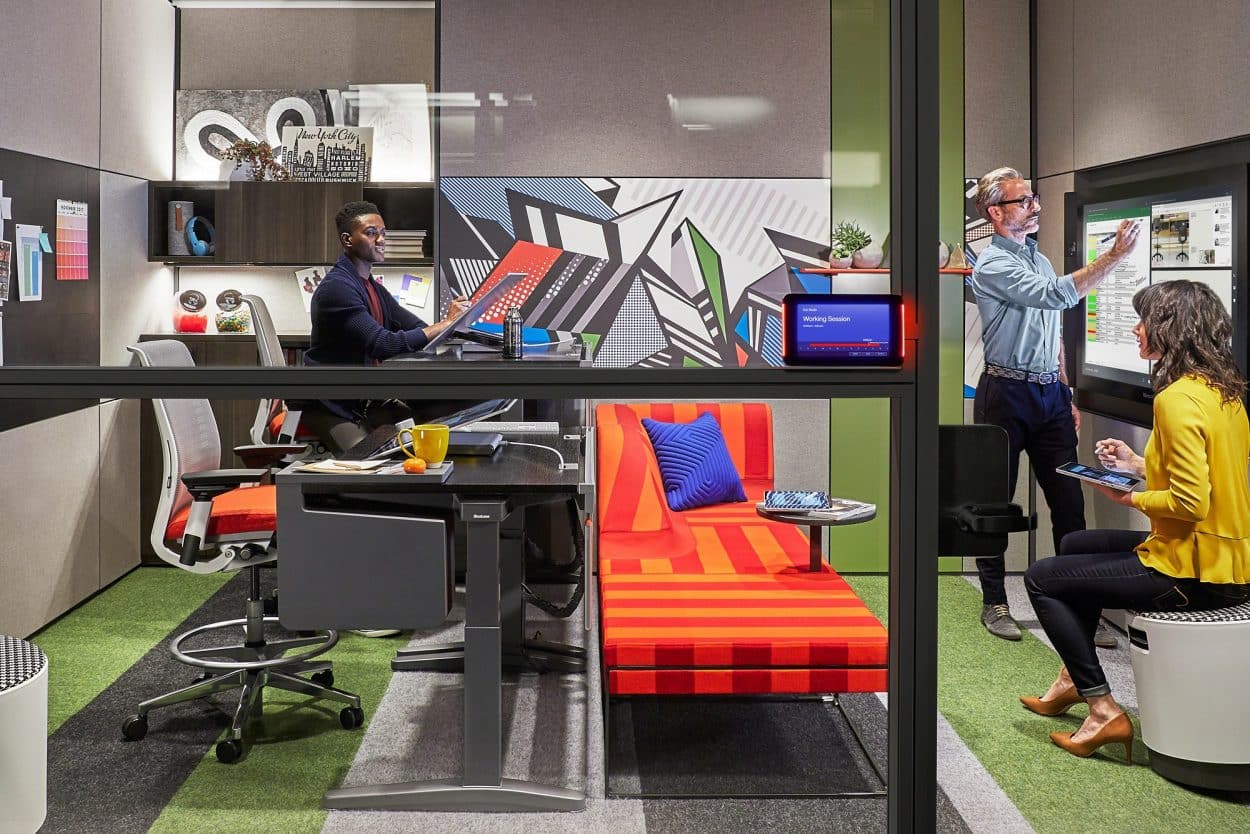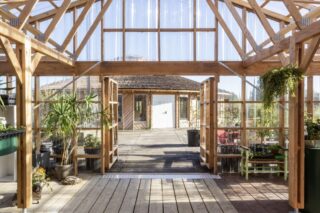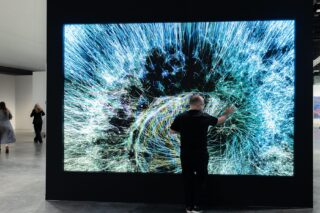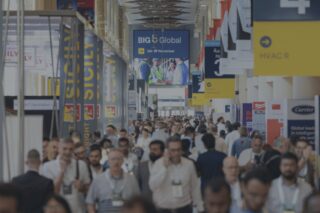Ladies and gentlemen, the future is here. The workplace and the concept of being at work are undergoing immense conceptual shifts. Suddenly, the office has become the set of the Jetsons; sliding screens in every room, Zoom video conferences with attendees from around the globe, lounges with employees playing video games or being massaged by a robot who adjusts the thermostat in response to body temperature change. Okay, not yet. But, beyond wondering where one is, the important question has become, Who gets any work done around here?
This year’s NeoCon brought together a slew of designers and masterminds to organize the confusion. Although technology is now essential at work, it doesn’t have to be distracting. Exhibitors and panelists presented new considerations in furniture, spatial and workflow design to help us grapple with this uncertainty. The added perk is discovering that the office can also be comfortable.
The Fourth Industrial Revolution
Technology has engendered a real dependency on, almost an addiction to gadgets. Instant connection to interfaces allows easy access to tasks as well as impromptu innovation. Work is something you do, not where you go. This big-time mobility trend is making its way into the workplace all over the world. Desk culture is fading into an activity-based workspace layout that has brought the home to the office and introduced variety instead of cubicle linearity.
As Jennifer Busch, vice president of Teknion in New York pointed out during her panel, “the average time of productivity while standing is 45 minutes, while the average while sitting is only 15.” It’s important to foster improvisation, not monotony. “We do our best thinking while in the shower or walking, but I don’t think a shower is going to be the next integrated design in the office… ,” Teknion senior designer Sean McKenney reminded the audience.
By the same token, the ability to immediately and constantly connect through technology has also influenced a human connection revolution. Spontaneous exchange is no longer limited to a coffee break or a text message. It’s invited into the workplace and seen as work. Serendipitous interactions are opportunities for creativity. Yet many office furniture arrangements are not conducive to visual sharing or brainstorming due to their lack of technical features or comfort.
Which is exactly why Steelcase teamed up with Microsoft to produce a new series of office ecosystems entitled Creative Spaces, launched in March. For example, with Duo Studio, colleagues can work side-by-side on screens mounted on a height-adjustable table, while a larger wall screen creates a theater setting for reviewing and the possibility to work from the flexible Umami lounge seating.
Yet, just because technology is changing the world, it isn’t always necessary and not all new innovations are a good idea. During his Future of the Smart Workplace panel, Ryan Anderson, director of commercialization at Herman Miller warned, “If it feels slick, but you don’t know what to do with it, beware.”
In a post-panel discussion about the tendency for technology to distract instead of facilitating social work, he clarified, “The best technologies disappear.”
The Internet of Things, or IoT, another super movement, has great potential to impact individual experience because it has the capacity to supersede human inaccuracy.
In an in-depth conversation with ArchiExpo, Jim Thompson, AIA and director of design at Little, and Jeff Gunther, founder of Metaform, both in Charlotte, North Carolina, offered a great example of a simple office meeting dysfunction solved by a smart space. Imagine a colleague can’t find Carol. Instead of the usual 20 minutes spent looking for her, a smart room’s staff calendar would locate and contact her in 20 seconds and the meeting could continue.
Where to Hide?
With tech and work invading all areas of our lives, and with workplaces being designed to foster maximum productivity, distraction is a prominent issue. A self-help industry offers secrets to focusing.
Dr. Gabor Nagy is a research program manager at Haworth, Inc in San Francisco. During Designing for Focus Work at NeoCon, he said the number one distraction is intelligible speech—basically gossip and what a colleague ate for dinner. And how long does it take you to ‘recover’ from this type of distraction, which pushes you to research dinner recipes, then to make a note for Friday, etc? Thirty minutes. So, even if the tech fades into the background, we’ll still be distracted.
In an attempt to stimulate interaction through the development of ‘we’ spaces, do we sacrifice concentration?
Dr. Nagy informed us that a lot of diversions have to do with a lack of focus flow. Flow is that feeling of being totally immersed, often called ‘being in the zone.’ It’s accompanied by a perfect balance of challenge and skill; if one of those is lacking, anxiety or apathy follows. The solution to finding focus flow is a good dose of self-policing with a sense of control over the situation. Depending on what the company needs, the layout of a space should include collaborative and communal zones, as well as private, heads-down type pockets that employees can choose when needed. This is what activity-based design and current office furniture encompass.
Comfortable: To do what we need or to be me
Designers are grappling with the desire for personal spaces that generate a sense of ease. For example, Patricia Urquiola‘s new chair Nuez (walnut in English) for Andreu World was designed with two equal sides that embrace the sitter. Similar is Arper‘s new chair, Cila, designed by Lievore Altherr, which also explores the idea of shelter.
This notion of comfort or coziness that is emerging strives to create a sense of home in the workplace, but also seeks to reinvent work as a joyful state, not an anxious one.
As a representative from Arper commented, “Design is for improving the quality of life, not to follow the market place.”
In a conversation with ArchiExpo e-Magazine regarding The Pacific Chair designed by Edward Barber and Jay Osgerby for Vitra, Osgerby pointed out that furniture that exposes its technology imposes the feeling that one, “needs to perform.” Their chair is the “antithesis to the technical chair; it’s intuitive.” He continued, by saying that, “society is coming back to simplicity. Good design isn’t gadgets.”
The same can be said for the new product line by Three H, which exhibits the desire for an organic experience through the use of asymmetry and curved edges with bold and leafy colors. Avoiding authoritative presences, the steel structures are covered with natural wood surfaces, lending a homespun feeling.
The coziness mirrors the movement towards collaborative spaces. Like being around a fire, sharing and relaxation inspire one to feel like oneself,, thus contributing to productivity that doesn’t feel like work.
Power to the People
The bottom line, according to Jeff Gunther, is that, “the rules are changing, so break the rules.” These changes in the workplace require users to impose unique adaptations on both space and ways of working. As much as technology causes apprehension, it’s still up to the user. Perhaps someday soon objects will just connect with objects and people will only connect with each other. “Culture is still the competitive edge,” says Jim Thompson.
Here are some interesting findings at NeoCon:


















